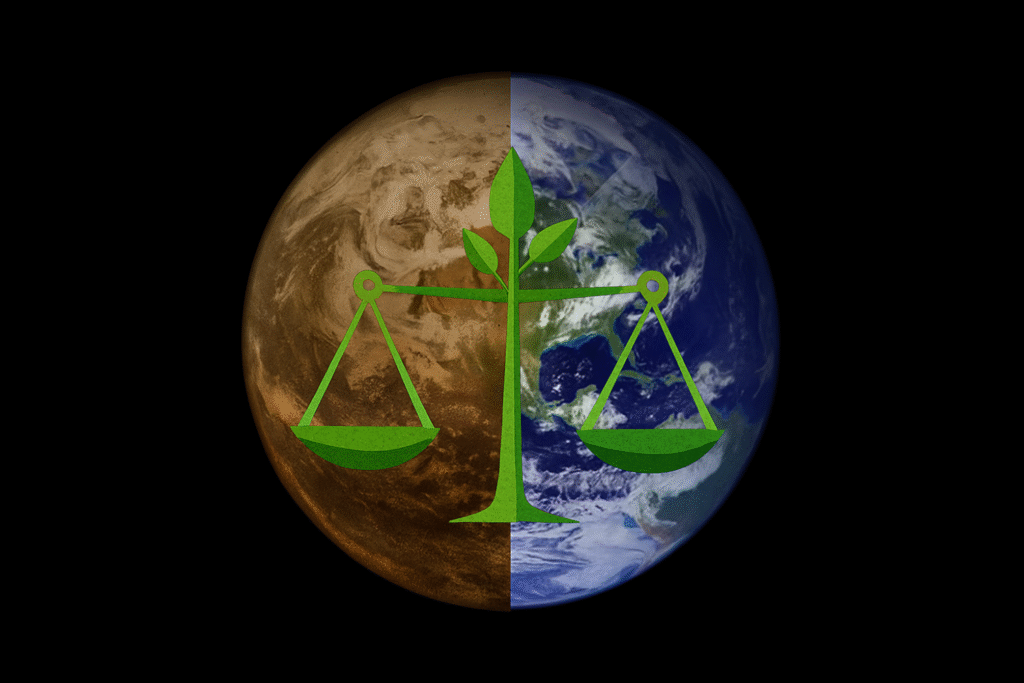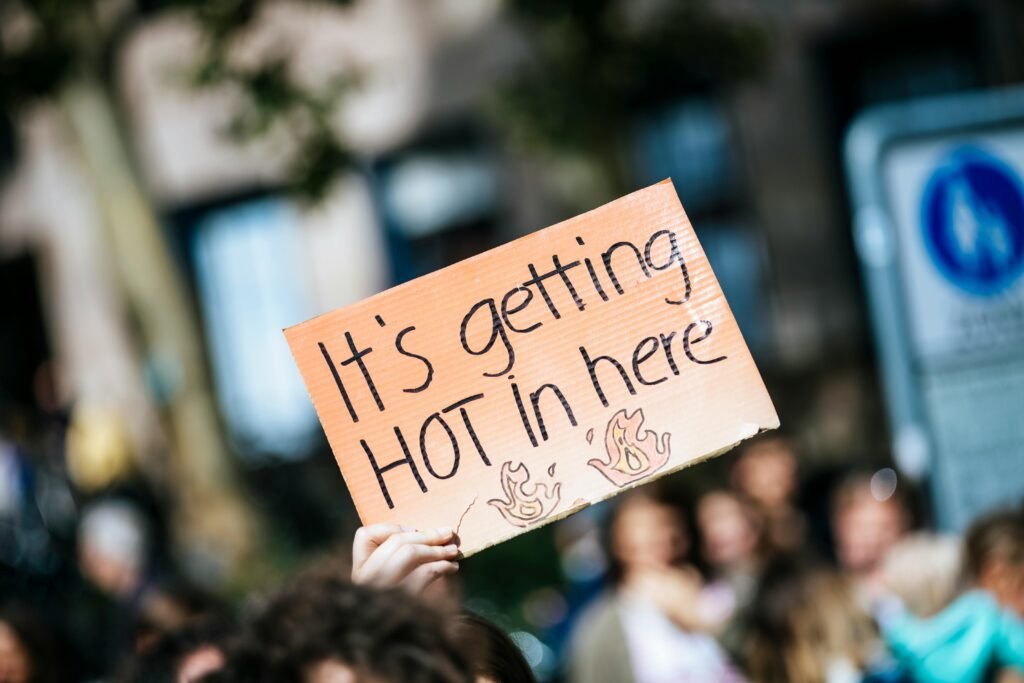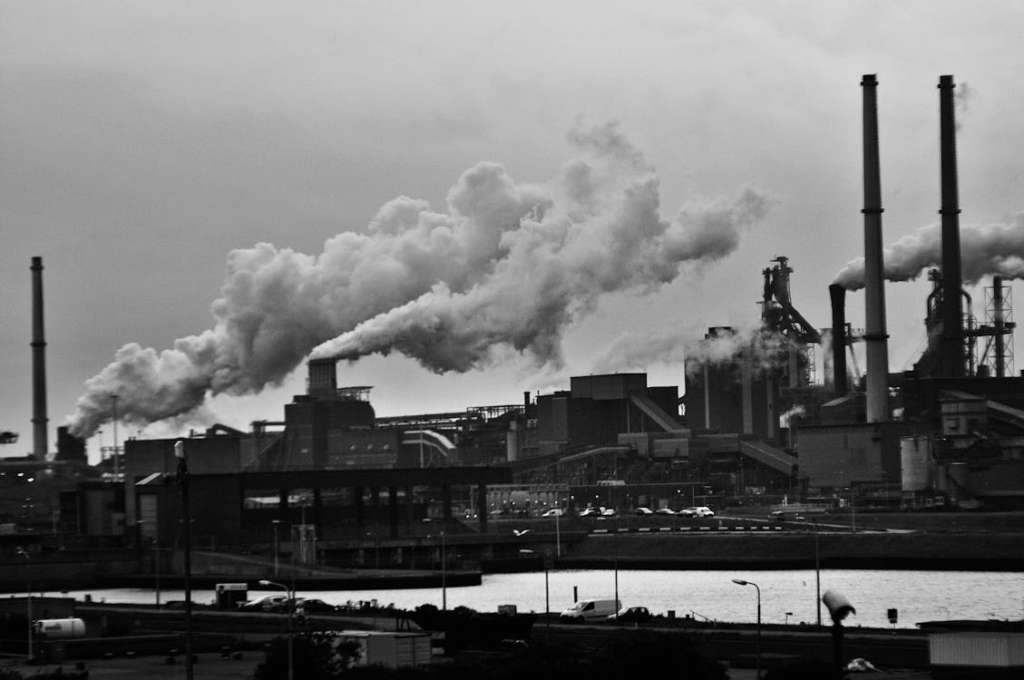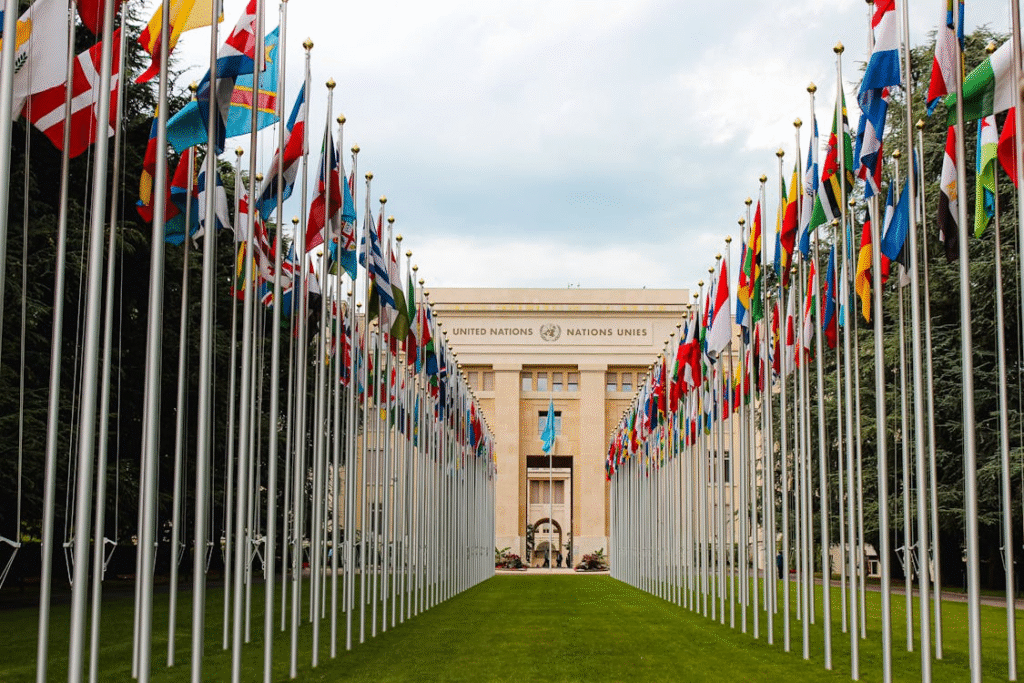
Table of Contents
Introduction
Environmental law and regulations are undoubtedly becoming of increasing importance in today’s world. As temperatures rise, fires roar, oceans rise, and life suffers, one begs the question of: “What are we actually doing about this?”
Well, the sugarcoated answer would be that we have a wide range of regulations and laws in place and that we are all doing our part in fighting the climate crisis. The real answer is, to put it plainly, not enough.

Foundations of Environmental Law and Regulations
“We are the first generation to feel the impact of climate change and the last generation that can do something about it.”
President Barack Obama
In reality, climate change’s impact is something that is being felt for the first time in history. However, this does not mean that it has just suddenly appeared (or that it is a hoax as some people believe…) It has been in the metaphorical oven for a long time.
History of Climate Change
Climate change has been a natural part of Earth’s history for millions of years, influenced by events such as volcanic eruptions, shifts in the planet’s orbit, and changes in solar activity. Since the Industrial Revolution in the late eighteenth century, human activities such as burning coal, oil, and gas have sharply increased the amount of greenhouse gases in the atmosphere. This has trapped more heat, caused global temperatures to rise, and led to melting ice, higher sea levels, and more extreme weather.

Historical Development of Environmental Law and Regulations
You might think that environmental law and regulations are a relatively recent development, or at least a post-industrial one. You might even think that you witnessed the first use of environmental law and regulations. Unless you are a miracle of science, (in which case, congrats) however, this belief is inaccurate. What is believed to be the first form of such a law or regulation was created in 1306 by King Edward I of England, who made a proclamation banning the burning of coal. He even threatened steep fines and the crushing of furnaces as a punishment! However, this did not have a lasting effect on Britain’s coal use.
In 1681, William Penn, the leader of the English colony of Pennsylvania tackled deforestation by ordering in his Charter of Rights that one acre of forest must be preserved for every five cleared for settlement. Unfortunately, this was largely disregarded due to the importance of the forest industry to the commonwealth’s growth. For example, it had a key role in the building of railways and it is estimated that an iron furnace required tens of thousands of acres of forest for production at a time. (around one hundred Central Parks)
Methods & Approaches
So, how do we approach such a broad problem? Well, there are a variety of ways:
Command-and-control regulation: Refers to laws and rules set by governments that directly limit pollution or require specific technologies to be used. For example, a government might set a legal cap on the amount of carbon dioxide a factory can release, or require all cars to meet certain emissions standards. This approach gives clear limits but can sometimes be costly for businesses to follow.
Market-based tools: Use financial incentives to encourage businesses and individuals to reduce pollution. These include carbon taxes, which make polluting more expensive, subsidies that support cleaner technologies, and carbon trading systems that allow companies to buy and sell permits to emit greenhouse gases. Governments could also impose maximum prices on renewable energy alternatives in order to encourage their consumption. This method gives flexibility and rewards those who cut emissions most efficiently.
Self-regulation and Voluntary Agreements: Involve companies or industries taking action on their own to reduce emissions or improve environmental performance. This can include setting sustainability targets, adopting green technologies, or joining international pledges to cut carbon use. While these measures show initiative, they may not always be strong enough without government oversight.
How can we ensure justice and democracy in our environmental law and regulations? Who bears the costs?: When we talk about justice and democracy in environmental law, it is about making sure everyone has a say. Fairness also means deciding who should pay for protecting the planet. The polluter pays principle, written into the 1992 Rio Declaration, says that those who cause damage to the environment should cover the costs of preventing or repairing it. That means big polluters, not ordinary taxpayers, should foot the bill. Governments can also step in with taxes, subsidies, or support for workers and communities to make the transition fair.

International & Domestic Frameworks
Now, let’s have a look at some existing frameworks across international law, regional law, and domestic law,:
International Law:
Global environmental agreements lay the foundation for shared action. For example, the Paris Agreement commits countries to limit warming to “well below 2 °C” and pursue efforts toward 1.5 °C, urging rapid greenhouse gas reductions and balance between emissions and removals in the second half of this century. Meanwhile, the Convention on Biological Diversity drives global action to protect ecosystems, and the Law of the Sea governs how nations manage marine resources and safeguard ocean health.
Regional Law:
Regional frameworks translate global aims into local impact, and politics can reshape them quickly. In Europe, environmental standards remain strong, but post-Brexit UK changes highlight the shift. For instance, the UK’s new Planning and Infrastructure Bill allows developers to “pay into a general fund instead of preserving local habitats,” overriding earlier EU habitat protections. This illustrates how regional dynamics and political choices can redefine environmental law at the local level.
Domestic Law:
Every country brings general principles to life through specific policies. A strong example comes from Japan’s Automobile Emission Control Law of 1992, under which NOₓ and SO₂ emissions dropped by 87 % and 52 % in regulated areas. The law also significantly reduced fetal death rates between 1991 and 1993. At the domestic level, national laws are where change becomes tangible through clean-air rules, protected lands, and industry regulation.
Bulgaria’s Climate Change Mitigation Act serves as the cornerstone of its domestic environmental legislation. Enacted in 2014 and amended in 2024, this act sets the legal and institutional framework for the country’s climate action governance. It outlines the overall policy to be followed in order to mitigate climate change and its impacts, fulfilling international obligations within the UNFCCC and the EU legal framework

Sector-Specific Areas of Environmental Law and Regulations
Land & Space Use:
Land and space use law controls how land is developed and protected. Planning laws and environmental impact assessments ensure that new buildings, roads, or factories do not harm the environment. Nature conservation laws protect parks, forests, and other critical habitats. For example, the European Union requires environmental impact assessments for major construction projects, helping to balance development with the preservation of natural spaces.
Industrial Regulation:
Industrial regulation focuses on controlling pollution and the safe handling of hazardous substances. Laws set limits on emissions, wastewater, and chemical use to protect people and the environment. The European Union’s REACH regulation ensures that chemicals are carefully assessed for safety from production to disposal. Many countries also set binding greenhouse gas reduction targets for industries, establishing monitoring systems to track progress.
Marine & Air Protection:
Protecting oceans and air quality is essential for human health and ecosystems. Marine laws regulate shipping, fishing, and pollution in seas and rivers. Air protection laws limit emissions from vehicles, factories, and power plants. For example, the International Maritime Organization’s MARPOL Convention sets global standards to prevent pollution from ships, and the EU Air Quality Directive establishes limits on pollutants in urban areas to protect public health.
Biodiversity:
Biodiversity law preserves wildlife, habitats, and ecosystem services. Wildlife conservation laws protect endangered species, while habitat regulations safeguard forests, wetlands, and rivers. Ecosystem services, such as pollination and water purification, are increasingly considered in planning and development decisions. The Convention on Biological Diversity encourages countries to develop national strategies for protecting species and habitats while maintaining ecosystem balance.

Enforcement & Remedies of Environmental Law and Regulations
Role of Regulatory Agencies and Government Oversight
Regulatory agencies are the frontline defenders of the environment. They set standards, monitor compliance, and enforce laws to prevent pollution and protect ecosystems. For example, the European Environment Agency tracks air and water quality across the EU, helping governments make informed decisions. Strong oversight ensures that businesses and individuals follow the rules and that environmental protections are not just words on paper.
Civil and Criminal Liability for Environmental Harm
Laws hold people and companies accountable for damaging the environment. Civil liability allows victims to seek compensation for harm, such as property damage or health impacts, while criminal liability punishes serious offenses like illegal dumping or toxic emissions. This system provides both deterrence and justice, ensuring that environmental harm carries real consequences.
Human Rights-Based Remedies
Environmental harm often intersects with human rights, as pollution, deforestation, or climate change can threaten health, livelihoods, and communities. Courts and tribunals increasingly use human rights frameworks to address environmental issues. For example, the European Court of Human Rights has recognized that severe environmental pollution can violate the right to life and the right to respect for private and family life. This approach links environmental protection directly to human well-being.
Remediation of Contaminated Land and Compensation
Cleaning up polluted land is crucial for health, safety, and sustainable development. Laws often require polluters to restore contaminated sites or provide compensation for the damage. Remediation can include removing toxic soil, treating water sources, or rehabilitating ecosystems. Compensation ensures that communities affected by pollution are not left to bear the costs themselves.
Environmental Disasters and Corporate Accountability
Major environmental disasters, such as oil spills or industrial accidents, highlight the need for corporate responsibility. Companies can face fines, cleanup orders, and lawsuits if their actions cause widespread harm. Regulations such as the EU Environmental Liability Directive ensure that corporations pay for damages they cause, reinforcing the principle that those who create environmental risks must also manage the consequences.
Contemporary Challenges
The Anthropocene: Law in an Era of Planetary Crisis
We are living in the Anthropocene, a time when human activity has become the dominant force shaping the planet. Environmental law and regulations play a crucial role in addressing the scale of this crisis, from climate change to mass biodiversity loss. Laws are evolving to tackle global challenges, setting limits on pollution, protecting ecosystems, and guiding societies toward more sustainable practices in a world under unprecedented pressure.
Balancing Environment Versus Economy
One of the toughest challenges for environmental law and regulations is balancing environmental protection with economic growth. Governments and courts often face trade-offs between preserving natural resources and supporting free trade, industry, or economic freedoms. For instance, regulations limiting emissions or restricting deforestation may conflict with business interests, but they are essential to prevent long-term ecological and societal harm. Thoughtful policy design aims to protect the environment while allowing sustainable economic development.
Environmental Law in a Globalised World
Environmental issues rarely respect borders, making international coordination vital. Environmental law and regulations must work across countries to address problems such as climate change, marine pollution, and deforestation. Treaties like the Paris Agreement and international frameworks on oceans and biodiversity help governments align standards and share responsibility, showing that cooperation is essential in a globalised world.
Future Directions
The future of environmental law and regulations is closely tied to innovation and accountability. Green technologies, renewable energy, and sustainable corporate practices offer tools to reduce environmental harm while supporting economic growth. At the same time, legal scholars and policymakers are exploring new concepts like ecocide as a potential international crime, holding corporations and governments accountable for extreme environmental damage. These developments show that the law must adapt to meet the urgent demands of a changing planet.
Critical Reflections
How Effective is Environmental Law in Practice?
Environmental law and regulations have achieved important successes, from cleaner air and water to the protection of endangered species. However, their effectiveness is often uneven. Some laws are well-enforced, while others exist mostly on paper. Implementation depends on government capacity, political will, and public pressure, meaning that environmental progress can vary widely between countries and regions.
Are Regulatory Systems Too Slow or Captured by Industry?
Critics argue that many regulatory systems are too slow to respond to urgent environmental crises. In some cases, laws can be influenced by powerful industry interests, leading to weaker standards or delayed enforcement. This can limit the impact of environmental law and regulations, particularly in areas like pollution control, resource extraction, and chemical management. Balancing economic interests with ecological protection remains a persistent challenge.
Should Law Be More Radical to Meet Planetary Limits?
Some scholars and activists argue that incremental reforms are no longer enough. To meet planetary limits, environmental law and regulations may need to become more radical, imposing strict limits on carbon emissions, banning ecologically harmful practices, and prioritising long-term sustainability over short-term profit. The law must evolve to reflect the urgency of the climate and biodiversity crises.
The Role of Activism, NGOs, and Citizens
Citizens, NGOs, and activist movements have become essential drivers of change. They hold governments and corporations accountable, push for stronger laws, and raise public awareness of environmental issues. Landmark campaigns, court cases, and grassroots movements have often led to reforms that would not have occurred through legislation alone. Environmental law and regulations are stronger when society actively participates in shaping them.
Conclusion
For me, environmental law is never just a technical set of rules. It is deeply about values, justice, and our survival as a species. I believe that laws have the power to protect the planet, but only if they are enforced properly and constantly adapted to keep up with the scale of environmental crises we face. Looking ahead, I think the future of environmental law and regulations depends on stronger global cooperation, creative legal solutions, and more active involvement from citizens like me. I feel that if people engage, challenge harmful practices, and push for meaningful change, the law can really make a difference in safeguarding the world we live in.
Interested in learning more about the basics of the law in an accessible way? Read our article on the ‘Rule of Law’ now!

